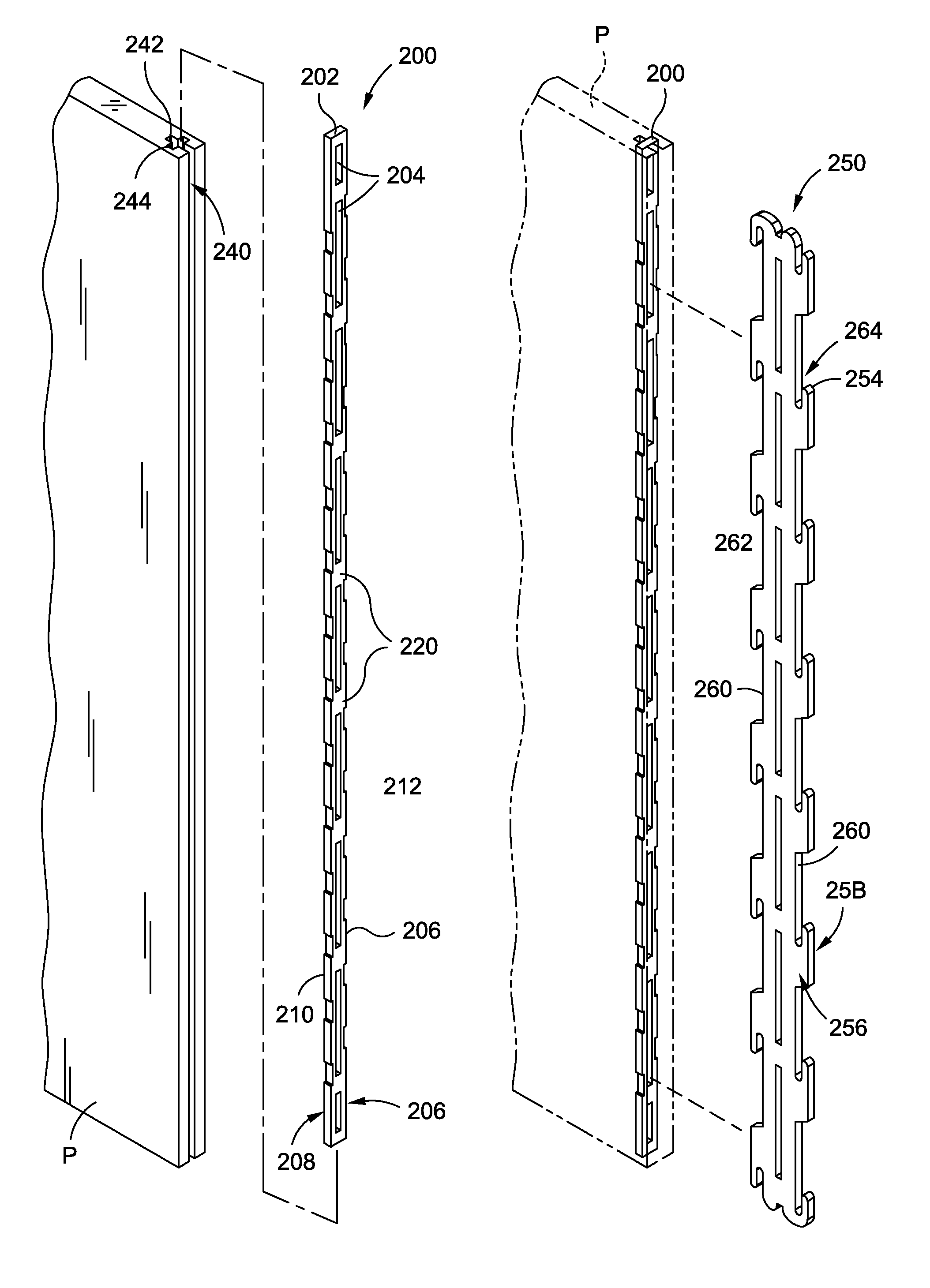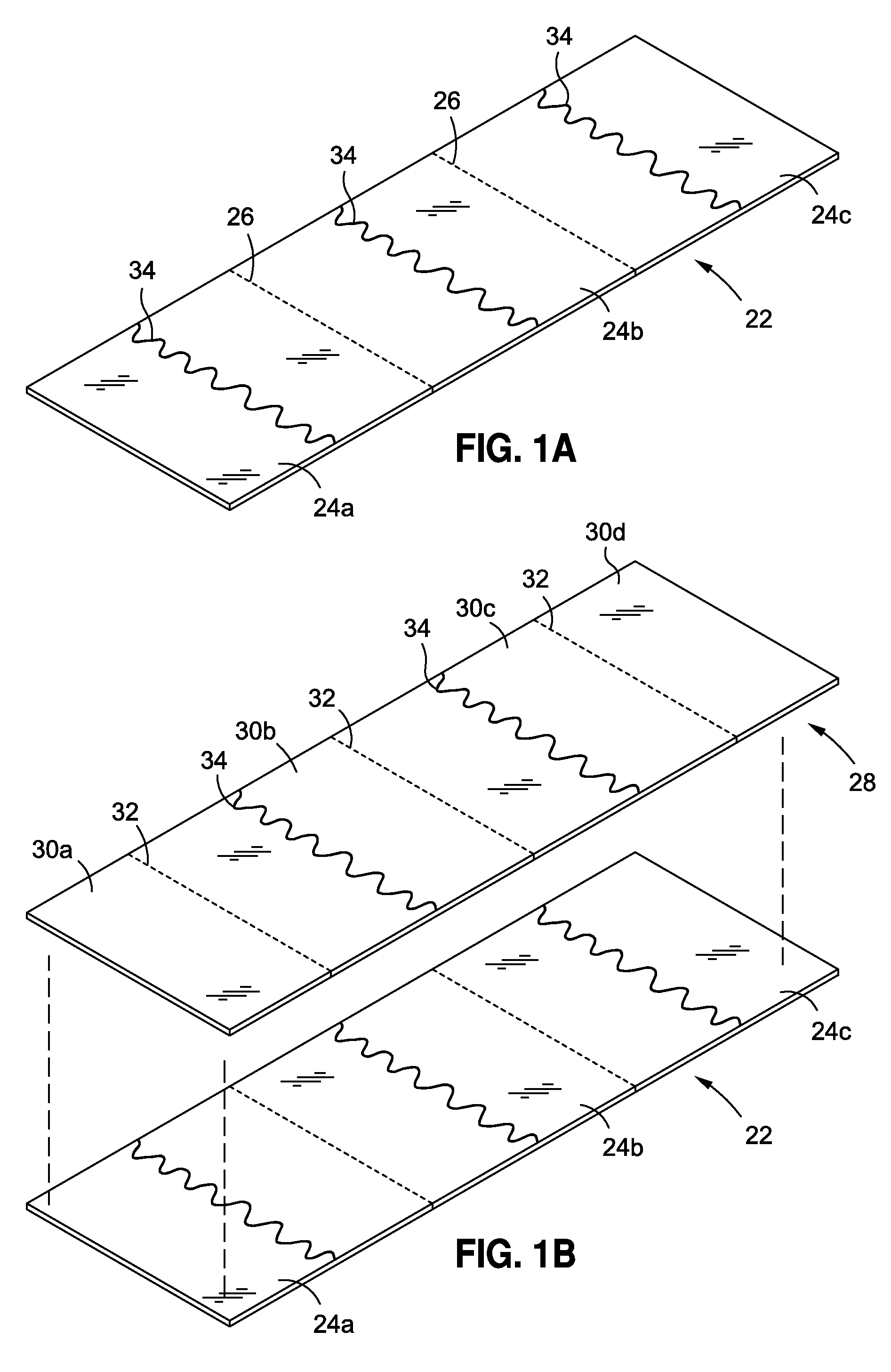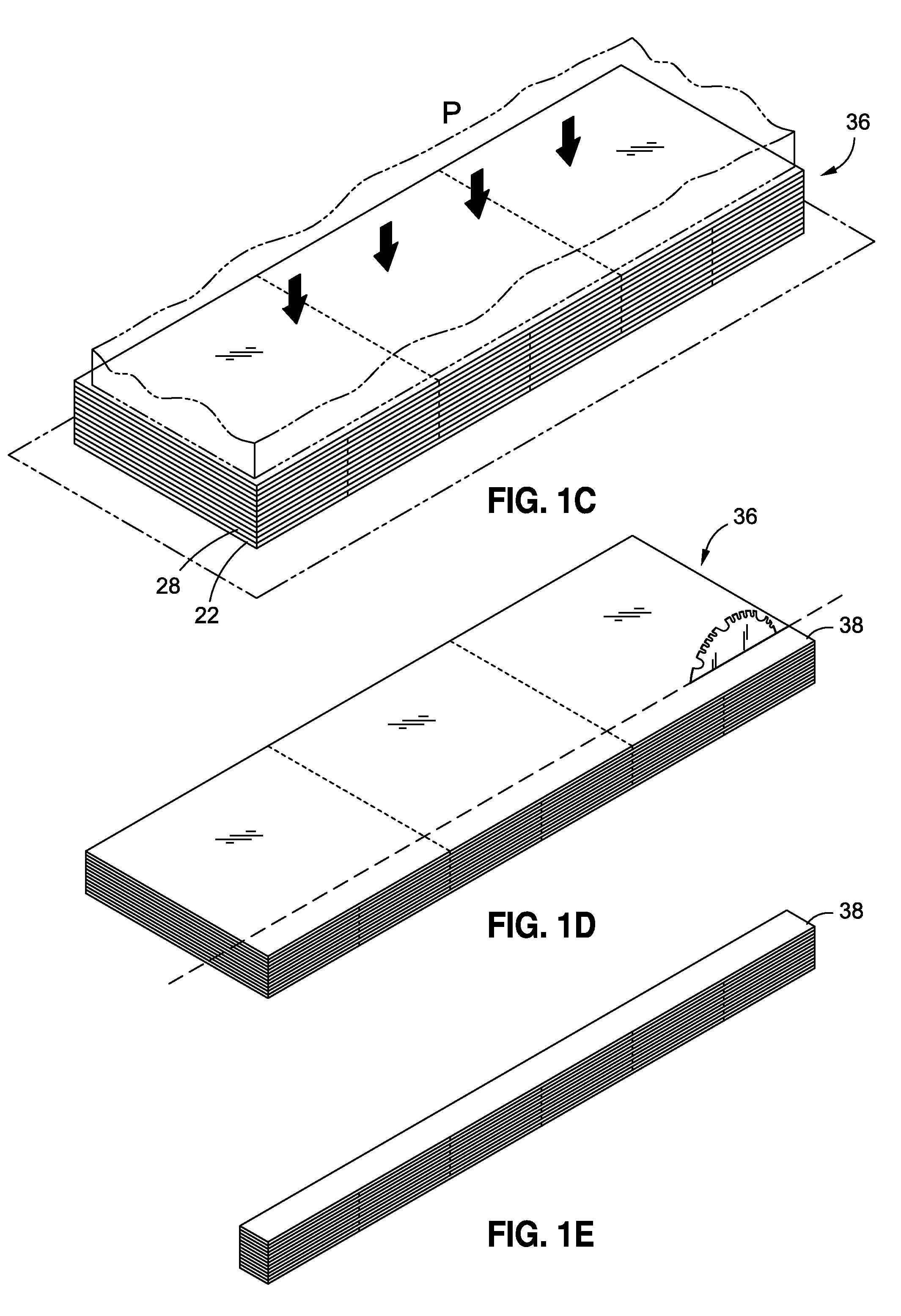Method and system for interconnecting structural panels
a technology for connecting structural or building panels and panels, applied in the direction of service system furniture, mechanical equipment, walls, etc., can solve the problems of heavy panels, large volume of materials, and high cost of panels, and achieve the effect of not jeopardizing the structural integrity of the cor
- Summary
- Abstract
- Description
- Claims
- Application Information
AI Technical Summary
Benefits of technology
Problems solved by technology
Method used
Image
Examples
Embodiment Construction
[0047]In the following description, numerous specific details are set forth in order to provide a more thorough description of the present invention. It will be apparent, however, to one skilled in the art, that the present invention may be practiced without these specific details. In other instances, well-known features have not been described in detail so as not to obscure the invention.
[0048]One embodiment of the invention is a building panel. As will become apparent later, such panels may be used for a variety of purposes. The uses of such panels are not intended to limit the scope of the invention herein. For example, the panels of the invention may be used to form walls or floors, or be used as doors, dividers or for other purposes.
[0049]In general, the panel of the invention has a core and a pair of opposing outer skins. The core preferably emulates a plant-like structure, having a number of structural elements and open spaces or voids. Other aspects of the invention comprise...
PUM
| Property | Measurement | Unit |
|---|---|---|
| thickness | aaaaa | aaaaa |
| thickness | aaaaa | aaaaa |
| thickness | aaaaa | aaaaa |
Abstract
Description
Claims
Application Information
 Login to View More
Login to View More - R&D
- Intellectual Property
- Life Sciences
- Materials
- Tech Scout
- Unparalleled Data Quality
- Higher Quality Content
- 60% Fewer Hallucinations
Browse by: Latest US Patents, China's latest patents, Technical Efficacy Thesaurus, Application Domain, Technology Topic, Popular Technical Reports.
© 2025 PatSnap. All rights reserved.Legal|Privacy policy|Modern Slavery Act Transparency Statement|Sitemap|About US| Contact US: help@patsnap.com



